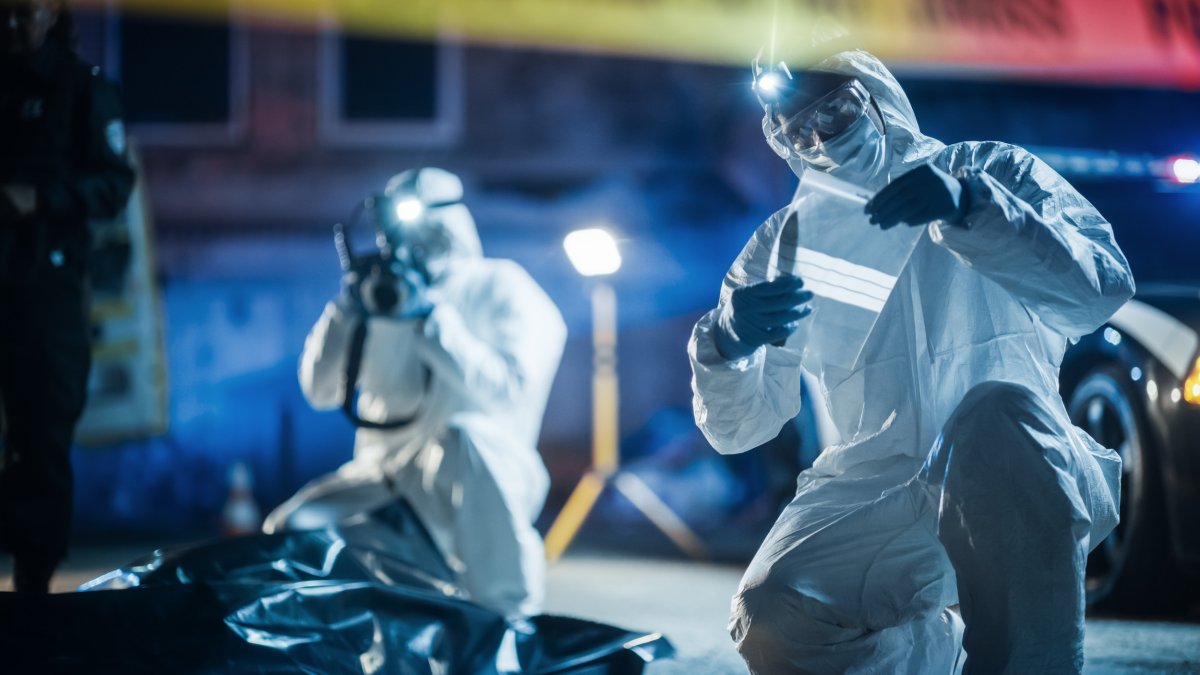In a breakthrough finding, scientists have identified a group of microbes that are found on dead bodies at specific points during decomposition, enabling the calculation of a time of death much more easily.
Bodies were studied as they decomposed in a variety of environments, with scientists discovering a network of 20 different microbes present on all the bodies, appearing like clockwork at certain stages of the decomposition process, according to a new paper in the journal Nature Microbiology.
This could be used to pinpoint the time of death of bodies in murder investigations, the scientists hope, significantly helping efforts to solve murders.
"It's really cool that there are these microbes that always show up to decompose animal remains," paper author Jessica Metcalf, an associate professor of microbiology and ecology at Colorado State University, said in a statement. "Hopefully, we're busting open this whole new area of ecological research."
When an animal or any other living thing dies, it begins to decompose, with its organic materials being digested and returned to the food chain. There are several stages of decomposition of a human body: fresh, bloat, active, advanced, and dry decay.

As the cells start to digest themselves, the internal organs start to swell due to gas released by the bacteria, and insects begin to lay eggs in the softer parts of the body. These larvae eventually hatch as maggots and devour more of the soft tissues.
For a recent death, the time of death is determined using the temperature of the body, and what stage of rigor mortis the body has entered into, while bodies that have been dead longer are judged based on the stage of decomposition. However, the rate at which the body cools, or the rate at which decomposition sets in, depends on the surrounding environment.
"The onset of rigor mortis is usually 2-4 hours after death and rigor mortis passes between 36-72 hours after death," Mark Evely, the director of the mortuary science program at Wayne State University, who was not involved in the study, told Newsweek. "The rate at which a dead body cools depends on factors within the body itself, such as body mass and disease processes present and environmental conditions, such as air temperature, whether the body is in water, etc."
This study examined 36 cadavers across several facilities, measuring how their microbiomes changed during the course of decomposition in varying climates and seasons of the year. The researchers found that regardless of climate and soil type, there was the same set of 20 microbes found on all 36 bodies. These microbes were also found to arrive at the same time across all the bodies.
"We see similar microbes arrive at similar times during decomposition, regardless of any number of outdoor variables you can think of," Metcalf said.
This finding has major implications for forensic science, as these microbes could be used to help more precisely figure out how long a body has been dead. In fact, using data from the study, the authors created a machine learning tool that can predict the time since death based on the microbiome.
"When you're talking about investigating death scenes, there are very few types of physical evidence you can guarantee will be present at every scene," paper co-author David Carter, a professor of forensic sciences at Chaminade University in Honolulu, said in the statement. "You never know if there will be fingerprints, or bloodstains or camera footage. But the microbes will always be there."

This will be especially helpful for bodies that are found outdoors, as there are fewer clues to the time of death after exposure to the elements.
"We're talking about outdoor death scenes," he said. "It can be difficult to gather information in those types of investigations," Carter said.
Additionally, these microbes appear to be being brought to the bodies via the insects that arrive to feed on the bodies and lay their eggs.
"It seems like the insects are bringing the microbes in," Metcalf said.
The researchers hope that these findings can be used not only to help in forensic investigations but also across microbial ecology research and agriculture.
"I see a lot of potential applications across agriculture and food industries," Metcalf said. "I feel like we're opening a whole lot of avenues in basic ecology and nutrient cycling."
Do you have a tip on a science story that Newsweek should be covering? Do you have a question about decomposition? Let us know via science@newsweek.com.
Uncommon Knowledge
Newsweek is committed to challenging conventional wisdom and finding connections in the search for common ground.
Newsweek is committed to challenging conventional wisdom and finding connections in the search for common ground.
About the writer
Jess Thomson is a Newsweek Science Reporter based in London UK. Her focus is reporting on science, technology and healthcare. ... Read more
To read how Newsweek uses AI as a newsroom tool, Click here.





